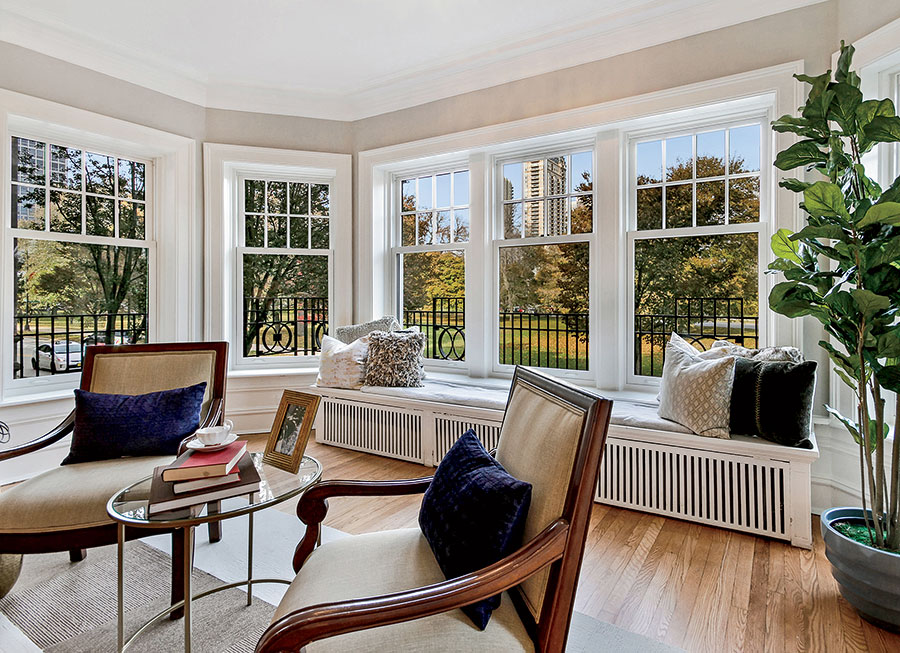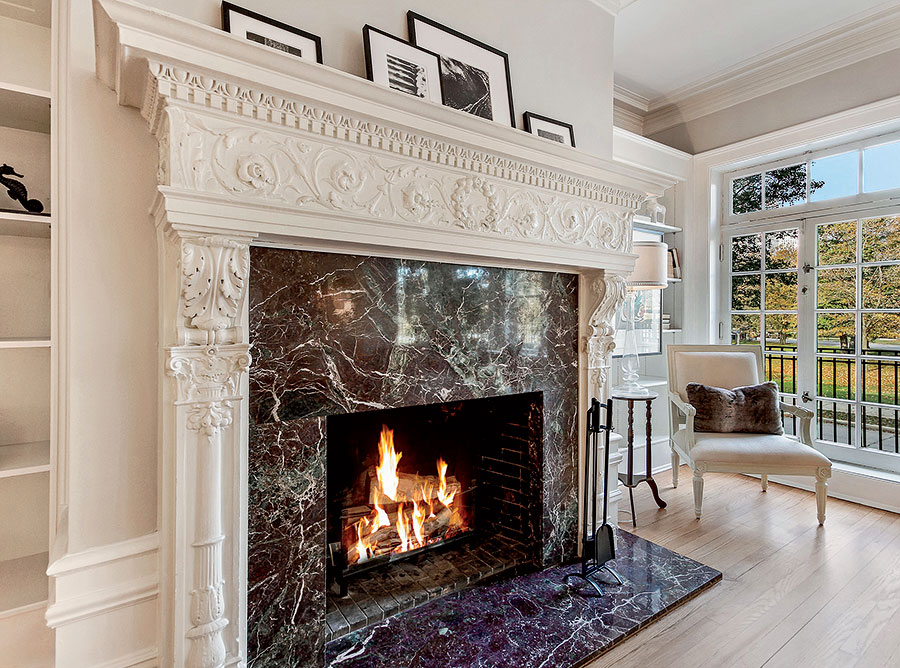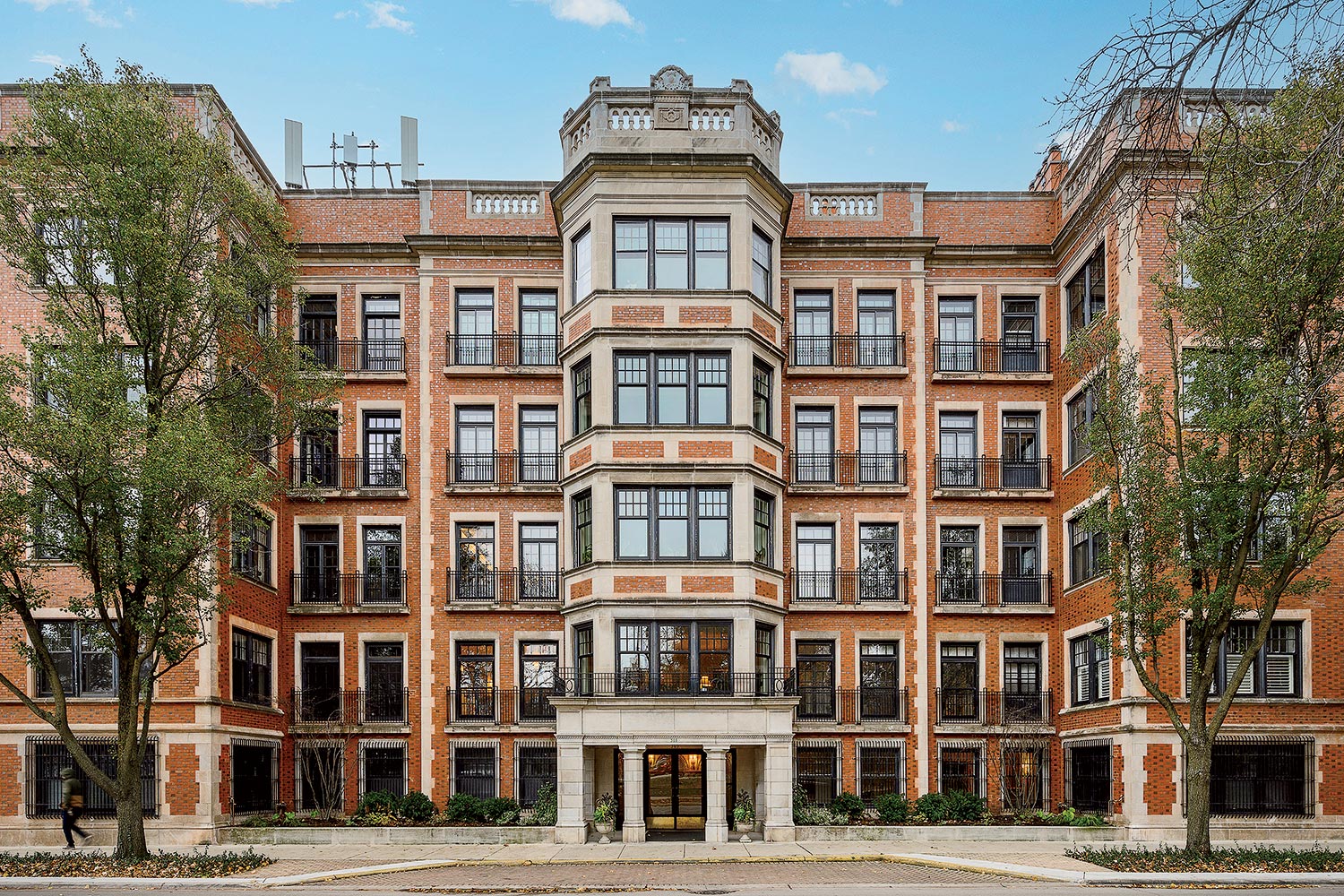Next to the bungalow, nothing epitomizes Chicago’s everyday cityscape quite like the courtyard apartment. Yet as ubiquitous as these U-shaped buildings are, they weren’t the only game in town during the first burst of multiunit residential construction here, between the tail end of the 19th century and the eve of the Depression. One example: the Aztec, at 305 West Fullerton Parkway, where a four-bedroom unit is for sale at $1.85 million.

Situated where the Aztec Tennis Club once stood, the building was designed by Andrew Sandegren, who did his share of courtyard buildings around town. Born in Sweden, Sandegren arrived stateside at 21 before opening his Chicago office in 1893. History of the Swedes of Illinois, published in 1908, notes that Sandegren made “a specialty of high grade work,” which included “many of the handsomest apartment buildings in Chicago.” Less flattering attention came his way in 1923, when, after a well-oiled conversation turned to religion, he fired a gun at a friend, wounding him in the chest and shoulder. Sandegren, whom the police found cowering in his bed, didn’t have to live with his shame for long; he died the following year.

Built in 1917, the four-story Aztec sports classic good looks spun of red brick, decorative ironwork, and casement windows that open to Juliet balconies. Unit 1E, measuring 3,700 square feet and equipped with four full bathrooms, features a coffered ceiling in the dining room and a fireplace with a highly ornamented surround and mantel in the living room. While an engaging, old-school vibe pervades the home, the public rooms, including a sunroom strung with seven windows overlooking Lincoln Park, flow on an almost open plan, which gives the residence an up-to-date air. As the Swedes say, “Away is good, but home is best.”



